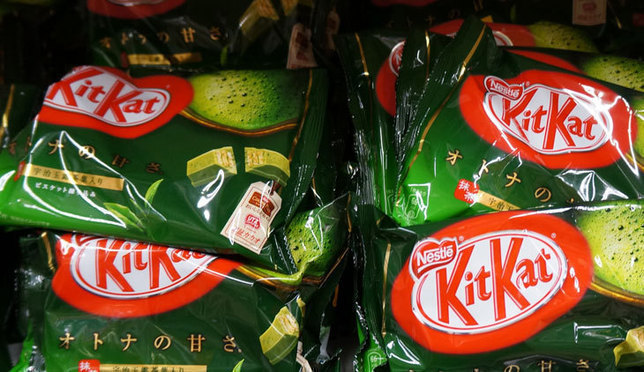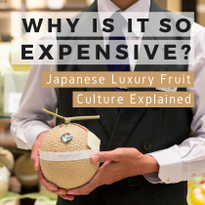- TOP
- Search Criteria
- Six Must-Know Words When Traveling in Japan with Food Allergies

STORY
Six Must-Know Words When Traveling in Japan with Food Allergies
Trying new foods is one of the best parts of traveling in Japan. But if you have food allergies, what should be a fun experience can be very stressful. It's hard to know what's safe to eat if you can't read food labels written in Japanese. To help those of you concerned with what may be hiding in your food, here are the words for six common food allergens in Japanese.
Wheat

How it's written: 小麦
How it's said: koh-moo-gee
What it's in: besides the usual culprits like baked goods and noodles including soba noodles, wheat is also commonly used in one of Japan's staple condiments: soy sauce. Because of this, people with allergies or sensitivities to wheat are going to want to pay attention to the seasonings used in their foods. (P.S. Still want to try ramen even though you can't have wheat? Some ramen shops like SORANOIRO in Tokyo offer brown rice noodles for their wheat-free patrons. Be sure to tell the staff if you have an allergy when you order.)
Soy

How it's written: 大豆
How it's said: die-zoo
What it's in: this goes without saying, but edamame, tofu, soy milk, and soy sauce are all-- you guessed it-- soy. Soy sauce commonly appears with sushi and soba, so just don't use it. Shoyu ramen is also a no as the broth is flavored with shoyu (醤油), the Japanese word for soy sauce. Natto and miso are also made with soy that has been fermented. Lastly, take care when choosing convenience foods like packaged snacks or onigiri, which will sometimes contain soy-based food additives or have been processed in a factory that also handles soy products.
Peanuts

How it's written: 落花生
How it's said: rah-kkah-say
What it's in: fortunately for those with peanut allergies, peanuts or peanut oils aren't typically used in Japanese cuisine.
However! Peanuts may be used as a seasoning in the broth of tonkotsu ramen, which is written 豚骨 or とんこつ in Japanese. Also be on the lookout for peanuts themselves, some sweets and snacks, or when eating other ethnic foods such as Thai.
Crab

How it's written: かに
How it's said: kah-knee
What it's in: you'll want to check convenience foods like heat-n-heat curries or instant soups and noodles to make sure that there's no crab used in the roux or stock. Also, check packages of senbei rice crackers before you buy them; sometimes the factories that make them also handle crab.
Dairy

How it's written: 乳 (typically seen on ingredient labels), 乳製品 or 乳成分 (lit. dairy products)
How it's said: nyuu, nyuu-say-heen, or nyuu-sei-bun
What it's in: fortunately dairy doesn't play a major role in traditional Japanese cuisine. Be careful around foods that would typically contain dairy such as baked goods, desserts, and Western foods or processed foods like instant noodles.
Shrimp

How it's written: えび, 海老, or エビ
How it's said: eh-bee
What it's in: like crab, be careful that no shrimp was used in the roux or stock of instant or convenience foods. Also, shrimp with mayonnaise-- usually written as 海老マヨネーズ or エビマヨ-- is a common filling for onigiri that you'll want to avoid. You'll also want to avoid ebisen (えびせん), rice crackers flavored with shrimp.
Sometimes foods and snacks will have information clearly stating whether or not they contain a common food allergen printed on the package. Here are two examples.

One way this information gets displayed is in a chart containing all of the foods recognized as potential food allergens in Japan. There are twenty-seven in total. If the product contains any of the allergens, the rectangle containing the respective word will be colored in.
Here's the chart written out in English, kanji, and romaji (the Romanized way of writing Japanese), moving from left to right from the top: wheat (小麦: komugi); buckwheat (そば; soba); egg (卵; tamago); dairy products (乳成分; nyuusei bun); peanuts (落花生; rakkasei); shrimp (えび; ebi); crab (かに; kani): pork (豚肉; buta niku); chicken (鶏肉: tori niku): beef (牛肉; gyuu niku); squid (いか; ika) salmon (さけ; sake); mackerel (さば; saba); salmon roe (いくら; ikura); abalone (あわび; awabi); soy (大豆; daizu); mountain potato (やまいも; yamaimo); cashews (カシュ―ナッツ; kashu nattsu); walnuts (くるみ; kurumi); sesame (ごま; goma); matsutake mushroom (まつたけ; matsutake); apple (りんご; ringo); orange (オレンジ; orenji); banana (バナナ; banana); peach (もも; peach); kiwi (キウイ; kiui); gelatin (ゼラチン; zerachin).
We can see that this bowl of instant ramen contains wheat, egg, dairy, shrimp, pork and chicken, salmon, mackerel, soy, sesame, and gelatin.

Another way food allergens might be written is in their own separate box. Here, the allergens are written in the yellow box. We can see that this product contains dairy, egg, wheat, and soy. While making sense of ingredient labels may be a little tricky, it gets much easier once you know what to look for.
Do you have experience traveling in Japan with a food allergy? If you have any tips or restaurants to recommend, please feel free to leave a message for your fellow travelers in the comments!
Wheat

How it's written: 小麦
How it's said: koh-moo-gee
What it's in: besides the usual culprits like baked goods and noodles including soba noodles, wheat is also commonly used in one of Japan's staple condiments: soy sauce. Because of this, people with allergies or sensitivities to wheat are going to want to pay attention to the seasonings used in their foods. (P.S. Still want to try ramen even though you can't have wheat? Some ramen shops like SORANOIRO in Tokyo offer brown rice noodles for their wheat-free patrons. Be sure to tell the staff if you have an allergy when you order.)
Soy

How it's written: 大豆
How it's said: die-zoo
What it's in: this goes without saying, but edamame, tofu, soy milk, and soy sauce are all-- you guessed it-- soy. Soy sauce commonly appears with sushi and soba, so just don't use it. Shoyu ramen is also a no as the broth is flavored with shoyu (醤油), the Japanese word for soy sauce. Natto and miso are also made with soy that has been fermented. Lastly, take care when choosing convenience foods like packaged snacks or onigiri, which will sometimes contain soy-based food additives or have been processed in a factory that also handles soy products.
Peanuts

How it's written: 落花生
How it's said: rah-kkah-say
What it's in: fortunately for those with peanut allergies, peanuts or peanut oils aren't typically used in Japanese cuisine.
However! Peanuts may be used as a seasoning in the broth of tonkotsu ramen, which is written 豚骨 or とんこつ in Japanese. Also be on the lookout for peanuts themselves, some sweets and snacks, or when eating other ethnic foods such as Thai.
Crab

How it's written: かに
How it's said: kah-knee
What it's in: you'll want to check convenience foods like heat-n-heat curries or instant soups and noodles to make sure that there's no crab used in the roux or stock. Also, check packages of senbei rice crackers before you buy them; sometimes the factories that make them also handle crab.
Dairy

How it's written: 乳 (typically seen on ingredient labels), 乳製品 or 乳成分 (lit. dairy products)
How it's said: nyuu, nyuu-say-heen, or nyuu-sei-bun
What it's in: fortunately dairy doesn't play a major role in traditional Japanese cuisine. Be careful around foods that would typically contain dairy such as baked goods, desserts, and Western foods or processed foods like instant noodles.
Shrimp

How it's written: えび, 海老, or エビ
How it's said: eh-bee
What it's in: like crab, be careful that no shrimp was used in the roux or stock of instant or convenience foods. Also, shrimp with mayonnaise-- usually written as 海老マヨネーズ or エビマヨ-- is a common filling for onigiri that you'll want to avoid. You'll also want to avoid ebisen (えびせん), rice crackers flavored with shrimp.
Allergen warning labels
Sometimes foods and snacks will have information clearly stating whether or not they contain a common food allergen printed on the package. Here are two examples.

One way this information gets displayed is in a chart containing all of the foods recognized as potential food allergens in Japan. There are twenty-seven in total. If the product contains any of the allergens, the rectangle containing the respective word will be colored in.
Here's the chart written out in English, kanji, and romaji (the Romanized way of writing Japanese), moving from left to right from the top: wheat (小麦: komugi); buckwheat (そば; soba); egg (卵; tamago); dairy products (乳成分; nyuusei bun); peanuts (落花生; rakkasei); shrimp (えび; ebi); crab (かに; kani): pork (豚肉; buta niku); chicken (鶏肉: tori niku): beef (牛肉; gyuu niku); squid (いか; ika) salmon (さけ; sake); mackerel (さば; saba); salmon roe (いくら; ikura); abalone (あわび; awabi); soy (大豆; daizu); mountain potato (やまいも; yamaimo); cashews (カシュ―ナッツ; kashu nattsu); walnuts (くるみ; kurumi); sesame (ごま; goma); matsutake mushroom (まつたけ; matsutake); apple (りんご; ringo); orange (オレンジ; orenji); banana (バナナ; banana); peach (もも; peach); kiwi (キウイ; kiui); gelatin (ゼラチン; zerachin).
We can see that this bowl of instant ramen contains wheat, egg, dairy, shrimp, pork and chicken, salmon, mackerel, soy, sesame, and gelatin.

Another way food allergens might be written is in their own separate box. Here, the allergens are written in the yellow box. We can see that this product contains dairy, egg, wheat, and soy. While making sense of ingredient labels may be a little tricky, it gets much easier once you know what to look for.
Do you have experience traveling in Japan with a food allergy? If you have any tips or restaurants to recommend, please feel free to leave a message for your fellow travelers in the comments!

Liked this story? Like DiGJAPAN!
on Facebook for daily updates!
THIS ARTICLE IS BASED ON INFORMATION FROM 10 07,2016 Author:Rachael Ragalye






















NEW COMMENT | 0 COMMENTS
Open a DiGJAPAN!
account to comment.
Open a DiGJAPAN! Account